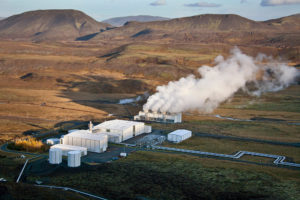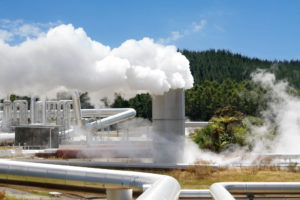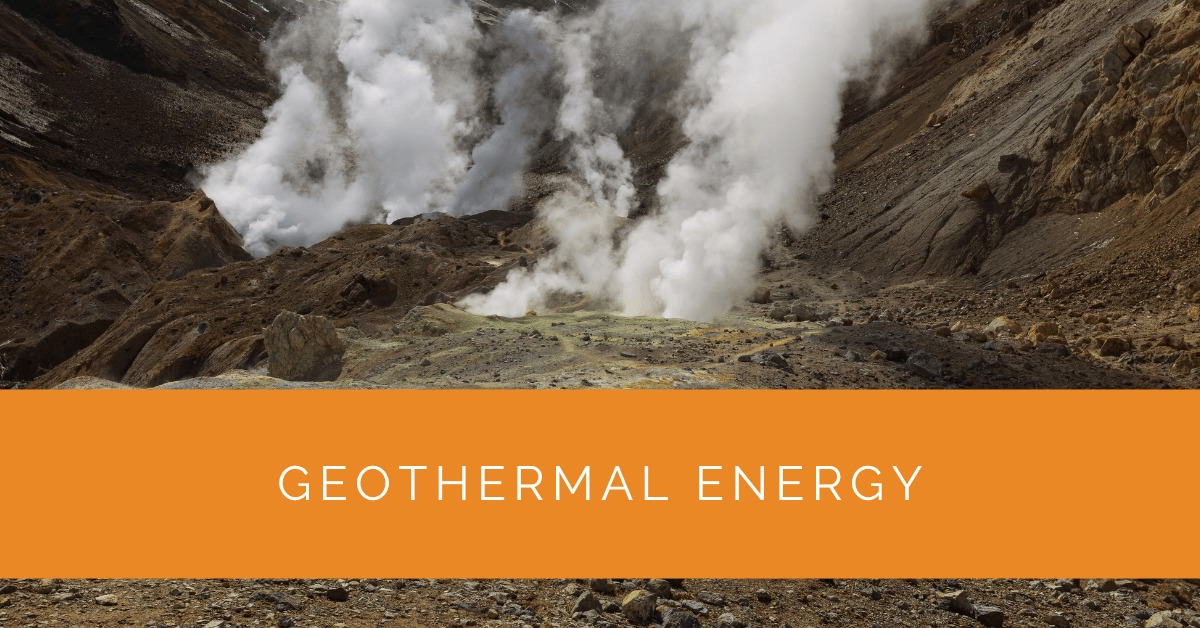Renewable energy sources are essential for a sustainable future, and geothermal energy stands out as a powerful contender. Geothermal power plants and systems offer a reliable and renewable energy solution by tapping into the Earth’s natural heat. In this comprehensive guide, we will delve into the intricacies of geothermal energy, exploring its potential, advantages, and global impact.
Contents
Key Takeaways
- Geothermal energy harnesses the Earth’s renewable heat to provide clean and reliable power, with applications ranging from geothermal heat pumps for heating and cooling to geothermal power plants for electricity generation.
- The advantages of geothermal energy include its renewable nature, stable power supply, cost-effectiveness, and versatile applications, making it an attractive option in the transition to a sustainable energy future.
- Geothermal energy is gaining global prominence, with countries like Iceland, the United States, the Philippines, and New Zealand leading in installed geothermal capacity, supported by government initiatives, technological advancements, and the recognition of its role in diversifying the renewable energy mix.
What is Geothermal Energy?
Geothermal energy is a remarkable power source derived from the Earth’s heat. It taps into the Earth’s natural geothermal heat, generated from the continuous radioactive decay of elements deep within its core. This heat energy is constantly replenished and is a renewable and sustainable resource for generating electricity and providing heating and cooling solutions.
Geothermal energy harnesses the Earth’s internal heat using different technologies and systems. One such technology is geothermal heat pumps, which use the relatively stable temperature beneath the Earth’s surface. These heat pumps circulate a fluid through a series of pipes, transferring heat to or from the ground to provide efficient heating and cooling for residential and commercial spaces. This method reduces energy consumption and decreases greenhouse gas emissions, contributing to a greener and more sustainable environment.
Another aspect of geothermal energy is its application in geothermal power plants. These power plants tap into geothermal reservoirs, typically in areas with hot rocks or pockets of geothermal fluid. By drilling deep into the Earth’s crust, high-pressure geothermal fluids can be extracted and utilized to generate electricity. Various geothermal power plants employ various technologies, including dry steam, flash steam, and binary cycle systems, each suited to different geothermal resources.

How Geothermal Energy Works
Geothermal Heat Pumps: A Closer Look
Geothermal heat pumps are versatile systems that utilize the Earth’s stable temperature to provide efficient heating and cooling. The process begins with a network of pipes, known as a ground loop, buried underground or submerged in a body of water near the property. A fluid, often a mixture of water and antifreeze, circulates through these pipes. During the heating mode, the fluid absorbs heat from the ground or water source and carries it to the heat pump unit located inside the building. The heat pump then transfers the heat to the building’s heating system. In the cooling mode, the process is reversed as the heat pump removes heat from the building and deposits it into the ground or water source.
Geothermal heat pumps offer several advantages. They provide consistent and efficient heating and cooling throughout the year, regardless of external weather conditions. By relying on the Earth’s renewable heat, these systems significantly reduce greenhouse gas emissions and reliance on fossil fuels. Additionally, geothermal heat pumps can be used for other applications, such as heating domestic hot water and even melting snow on driveways and walkways, showcasing their versatility and energy-saving potential.
Geothermal Power Plants: Generating Electricity from the Earth’s Heat
Geothermal power plants harness the Earth’s geothermal resources to generate electricity on a larger scale. These plants are strategically located in areas with accessible geothermal reservoirs, either steam or hot water. The electricity generation process begins with extracting geothermal fluids from deep underground by drilling wells into the geothermal reservoirs.
Once the geothermal fluid is brought to the surface, it passes through a separation process, separating the steam or hot water from any impurities. In the case of steam-dominated reservoirs, the high-pressure steam is directly used to drive a turbine, which is connected to a generator to produce electricity. On the other hand, in hot water-dominated reservoirs, the geothermal fluid is first passed through a heat exchanger to transfer its heat to a secondary fluid with a lower boiling point, such as isobutane or pentane. The secondary fluid vaporizes and drives the turbine, generating electricity.
The advantages of geothermal power plants are numerous. They provide a reliable and constant renewable energy source unaffected by weather conditions. Unlike other renewable energy sources like solar and wind, geothermal power generation is not intermittent, ensuring a stable electricity supply. Furthermore, geothermal power plants produce electricity with minimal greenhouse gas emissions, making them an environmentally friendly alternative to fossil fuel-based power generation.
Advantages of Geothermal Energy
Geothermal energy offers a multitude of advantages that make it an attractive renewable energy option:
- Clean and Renewable Energy Source: Geothermal energy is considered one of the cleanest and most sustainable sources. It produces minimal greenhouse gas emissions during the generation process, reducing the carbon footprint and mitigating the impact of climate change.
- Reliable and Stable Power Supply: Unlike solar and wind energy, which depend on weather conditions, geothermal energy provides a constant and reliable power supply. The Earth’s heat is a renewable resource available 24/7, ensuring consistent energy throughout the year.
- Cost-Effectiveness of Geothermal Systems: Although geothermal systems’ initial installation costs can be higher than traditional heating and cooling systems, the long-term operational costs are significantly lower. Geothermal systems require less maintenance, have longer lifespans, and are not subject to the volatility of fossil fuel prices, resulting in substantial savings over time.
- Versatile Applications: Geothermal energy is not limited to electricity generation alone. It finds extensive applications in various sectors, including district heating, where geothermal heat is distributed through a network of pipes to heat residential and commercial buildings. Additionally, geothermal energy can be used for industrial processes, greenhouse heating, spas, and recreational facilities.

Installed Geothermal Capacity Worldwide
As the world recognizes the immense potential of geothermal energy, several countries have made substantial progress in harnessing this renewable resource. Here are some notable examples:
- Iceland: Iceland is renowned for its vast geothermal resources and is considered a global leader in geothermal energy. The country relies heavily on geothermal power plants and has successfully integrated geothermal energy into its infrastructure. Geothermal sources meet a significant portion of Iceland’s electricity and heating needs.
- United States: The United States possesses significant geothermal potential across several regions. States such as California, Nevada, and Hawaii have made substantial investments in geothermal energy and are major contributors to the country’s installed geothermal capacity. The U.S. geothermal industry continues to grow, with ongoing projects exploring enhanced geothermal systems (EGS) to tap into deeper and previously untapped geothermal resources.
- Philippines: The Philippines is another country with a considerable geothermal capacity. Geothermal power plants in the Philippines contribute significantly to the country’s electricity generation. Geothermal resources have been harnessed for power generation and direct use applications.
- New Zealand: New Zealand is known for its geologically active landscape, which provides abundant geothermal resources. The country has developed geothermal power plants that utilize its natural geothermal reservoirs for electricity generation. Geothermal energy plays a crucial role in New Zealand’s renewable energy mix and helps the country reduce its reliance on fossil fuels.
Geothermal Energy Comes to the Forefront
With the growing global demand for clean and sustainable energy sources, geothermal energy is emerging as a prominent player in the renewable energy landscape. Several factors have contributed to its increasing prominence:
- Diversification of Renewable Energy Mix: Geothermal energy provides a crucial diversification to the renewable energy portfolio, complementing other intermittent sources such as solar and wind power. Its constant availability and ability to generate electricity around the clock make it an attractive option for grid stability and energy security.
- Government Support and Incentives: Governments worldwide have recognized the potential of geothermal energy and are actively supporting its development through various incentives, grants, and policy frameworks. These initiatives aim to promote investment in geothermal projects and remove barriers to their widespread adoption.
- Technological Advancements: Technological advancements in geothermal energy have significantly expanded its reach and viability. Enhanced geothermal systems (EGS), also known as engineered geothermal systems, have emerged as a promising solution to access geothermal energy previously considered unsuitable for conventional geothermal power generation. EGS involves creating engineered reservoirs by stimulating hot rocks deep underground, allowing for geothermal heat extraction.
Expert Insights From Our Solar Panel Installers About Geothermal Energy
Geothermal energy provides a constant and reliable power source, making it an excellent complement to solar and wind energy. By integrating geothermal systems, we can ensure a stable energy supply even when the sun isn’t shining or the wind isn’t blowing.
Lead Renewable Energy Consultant
The efficiency of geothermal heat pumps in both heating and cooling applications is remarkable. These systems offer substantial savings on energy bills while minimizing environmental impact, making them a smart choice for homeowners and businesses alike.
Senior Geothermal Specialist
Installing geothermal power plants requires precise engineering and a deep understanding of geological conditions. With the right expertise, these plants can deliver significant and sustainable energy output, contributing to our clean energy goals.
Chief Project Engineer
Conclusion
Geothermal energy represents a tremendous opportunity to harness the Earth’s renewable heat and unlock a sustainable and reliable power source. From geothermal heat pumps providing efficient heating and cooling solutions to geothermal power plants generating electricity on a larger scale, the applications of geothermal energy are diverse and promising. With its numerous advantages, increasing installed capacity worldwide, and technological advancements, geothermal energy is coming to the forefront as a key player in the global transition to a cleaner and more sustainable energy landscape. By embracing geothermal energy, we can pave the way for a greener future, reduce reliance on fossil fuels, and mitigate the impacts of climate change.
About the Author
Solar Panels Network USA stands at the forefront of solar energy solutions, driven by a team of seasoned solar engineers and energy consultants. With over decades of experience in delivering high-quality solar installations and maintenance, we are committed to promoting sustainable energy through customer-centric, tailored solutions. Our articles reflect this commitment, crafted collaboratively by experts to provide accurate, up-to-date insights into solar technology, ensuring our readers are well-informed and empowered in their solar energy decisions.

